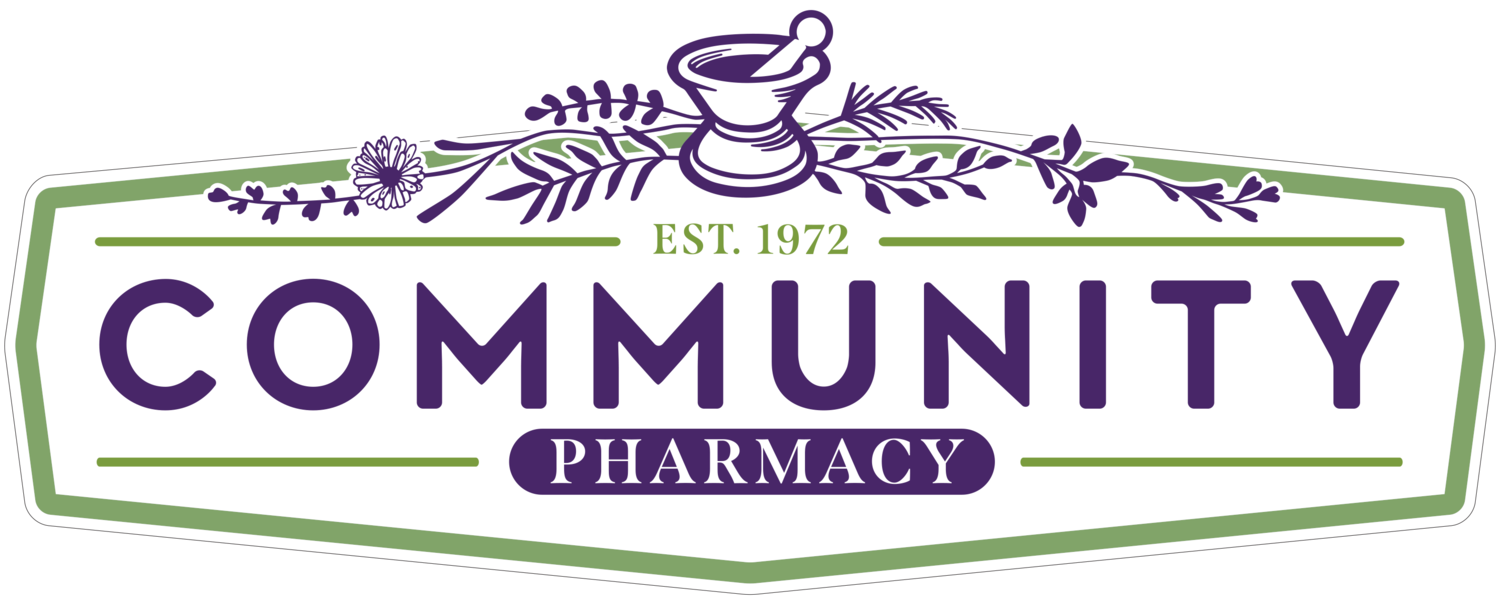Grow Your Own Backyard Apothecary
By Amy Baker
Imagine having your very own herbal apothecary … right in your own backyard. Many medicinal herbs grow easily and thrive in Wisconsin, even with our relatively short growing season. With very little time and effort, you can grow plants that will help with basic ailments, like tummy aches, sore throats, summer colds, fevers, PMS and restless sleep. Check out the herbs listed below, and think about tucking them into your garden. All should be available easily at farmer’s markets and food co-ops -- either as seeds or starter plants. Remember to buy herbs that are organically grown! Until your own plants are ready to harvest, you can find all these useful herbs, dried, at Community Pharmacy and Community Wellness Shop. Think about getting a few ounces of each and trying them out in different applications as your own plants are busy growing.
Easy-to-Grow Herbs
CALENDULA (Calendula officinalis) Livening up the garden with its bright yellow and orange hues, calendula flower is a powerhouse herb. It promotes skin healing and is excellent for scrapes, bug bites and burns (including sunburn). It’s also anti-fungal and anti-inflammatory. Plant calendula once and it will re-seed itself, so you’ll likely never have to buy plants or seeds again. Pick often to promote abundant flowering. Think about using calendula like this:
Harvest and dry flowers for winter use.
Add fresh petals to salads or sprinkle over cooked greens.
Make a tea of fresh flowers and use as a gargle for mouth sores or sore throats.
Make a poultice out of fresh flowers (Finely chop or mash flowers to form a paste. Cover affected area with paste and cover with a bandage or cloth).
Make an infused oil to use on its own or as a base for healing lip balms or salves. To make an infused oil, chop a batch of fresh flowers (free of dew or rain drops) and pack into a mason jar. Cover with high-quality, organic oil. Keep adding flowers and oil throughout the first few weeks of harvest, until the jar is full. Place in a dark spot in the kitchen, and shake every so often. After 4-6 weeks, strain out plant material and store in a dark bottle or in the fridge. To extend the shelf life, add a drop or two of vitamin E oil.
CATNIP (Nepeta cataria) This easy-to-grow perennial is a gentle, calmative remedy, suitable for even children and the elderly. An infusion (strong tea) of catnip leaves and flowers can help with insomnia, anxiety, depression and indigestion. Especially tasty when served with honey.
CHAMOMILE (Matricaria recutica) Calming and delicious, chamomile flowers' healing benefits were known even in ancient civilizations in Greece, Egypt and Rome. Used for centuries as a tea, chamomile’s sunny little flowers can help ease stomach distress, calm jittery nerves, promote relaxing sleep, soothe teething babies, bring down fevers, and even help reduce infection. Like calendula, it is a re-seeding annual (hooray -- less work!). Plant it in a place that is easy to reach, as you’ll want to harvest flowers often to encourage vigorous blooming. Chamomile flowers dry easily when spread out for several days on a clean cloth in a shady spot in the house. When dry, keep in an airtight jar, and away from light.
LEMON BALM (Melissa officinalis) Lemon balm is such an easy-to-love herb. A member of the mint family, it has been cultivated and used throughout Europe for thousands of years to support digestion, to calm the nervous system, and to promote focus. It is also appreciated for its anti-viral, anti-spasmodic and diaphoretic (sweat-inducing/fever-reducing) properties. Known as the happy herb, it promotes joy and reduces stress. Lemon Balm is a hardy perennial; one plant will be with you for years to come. Be sure to harvest often, as it will promote growth and keep the plant from going to seed. Enjoy lemon balm as a delightful tea, served hot or iced.
SAGE (Salvia officinalis) A short-lived perennial plant native to the Mediterranean regions, sage has long been regarded as one of the most important medicinal herbs. Rich in antioxidants and polyphenols, sage is antiseptic, anti-microbial and anti-inflammatory. Its mildly bitter flavor promotes healthy digestion, and its cooling properties are helpful for those experiencing hot flashes. Try making a strong tea, then use it as a gargle for sore throats, a bedside mister for middle-of-the-night hot flashes, or mix with a bit of honey and drink regularly (hot or over ice) to aid digestion and possibly ease the occurrence of hot flashes over time.
OREGANO (Origanum Vulgare) Native to Europe, the Mediterranean and southern Asia, oregano is a perennial and a member of the mint family. Like rosemary (Rosmarinus off.) and thyme (Thymus vulgaris), it accumulates high amounts of volatile oils and contains significant amounts of antioxidants, which help to support a healthy microbial environment in the intestines and throughout the body. Oregano is easy to use as a culinary herb when added to sauces, soups and stews. We tend to use herbs in tiny quantities here in the US, but see how taste and health improve when you use herbs by the handful rather than the teaspoonful! Oregano can be easily dried and crushed for use throughout the winter. It makes an excellent tea for colds and flu when gently boiled with onion, garlic and cinnamon, then mixed with a bit of honey ... honest!
Amy Baker is a gardener, teacher, wildcrafter, herb enthusiast and an award-winning writer. She has studied herbal medicine with various teachers in Chicago and Madison, and earned her certification as a Culinary Nutrition Expert and Instructor through the Academy of Culinary Nutrition. Amy has enjoyed creating plant medicines, natural beauty and cleaning products, and all manner of tasty, nutritious, healing recipes for decades.






